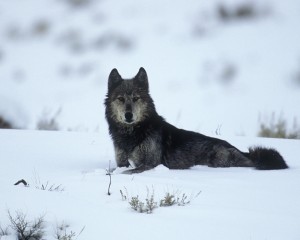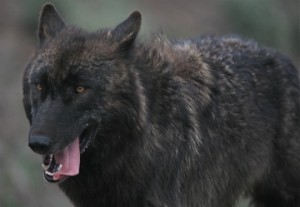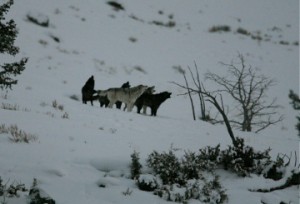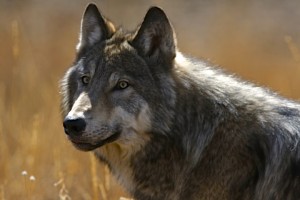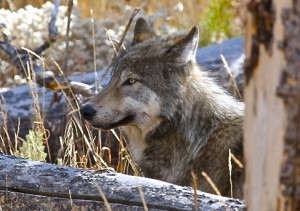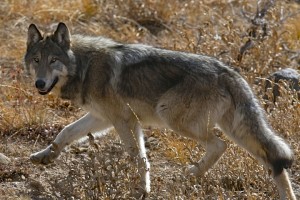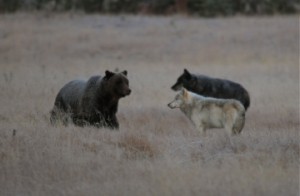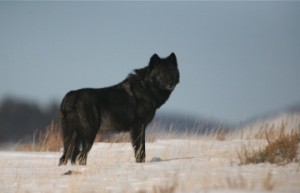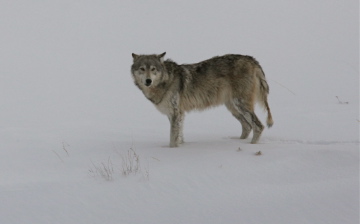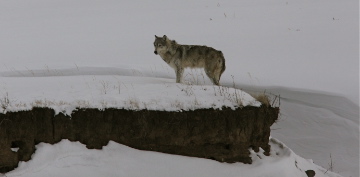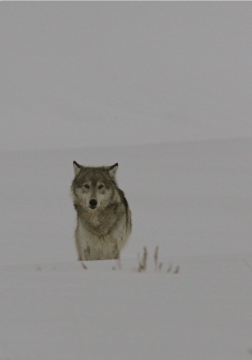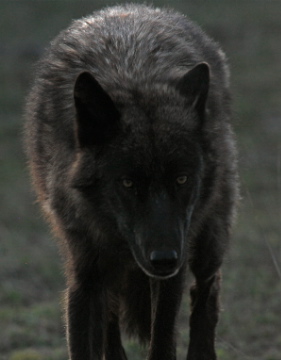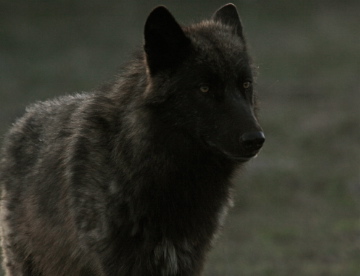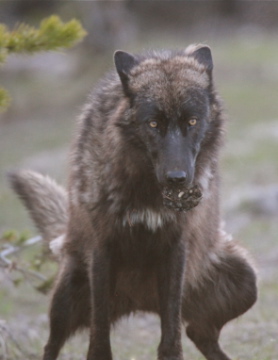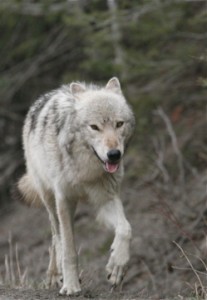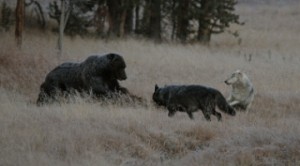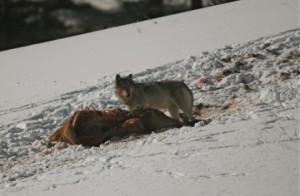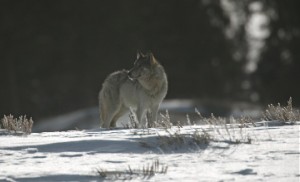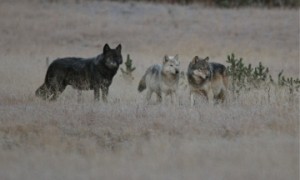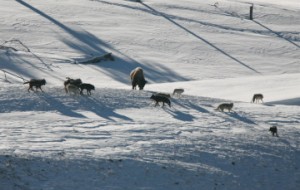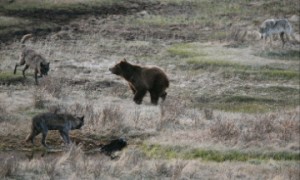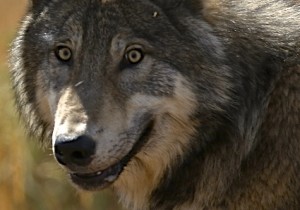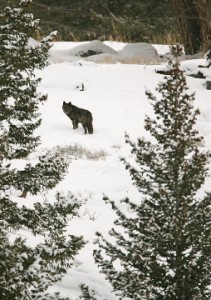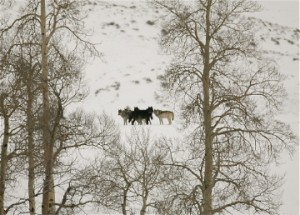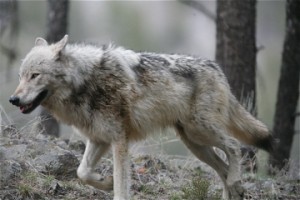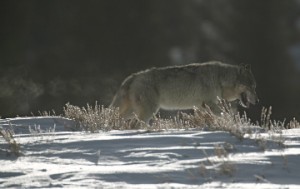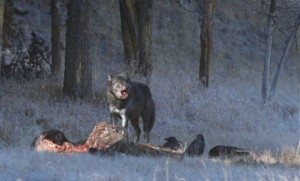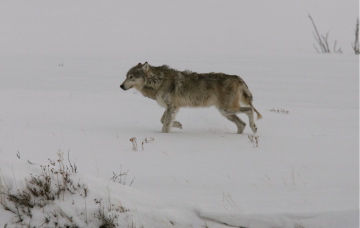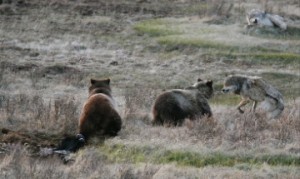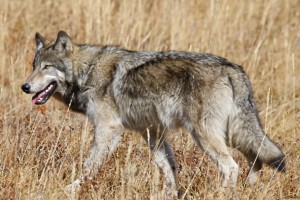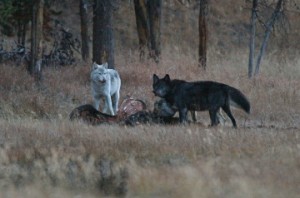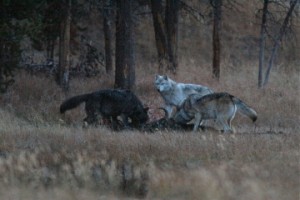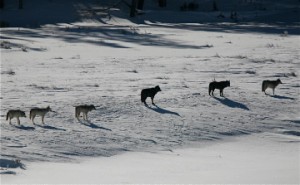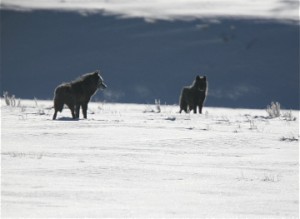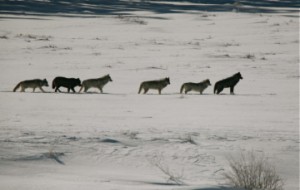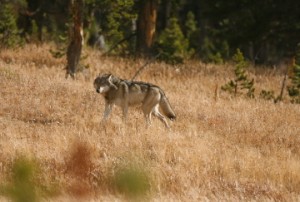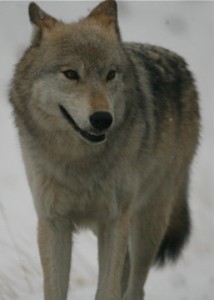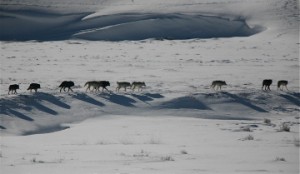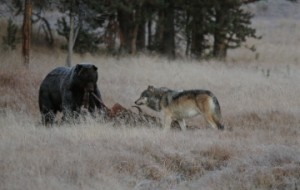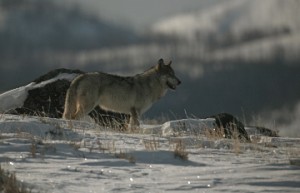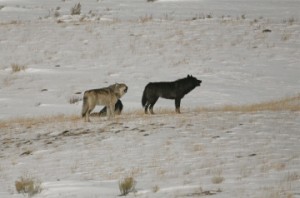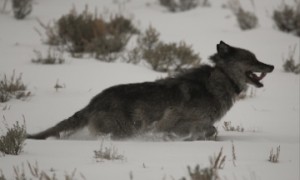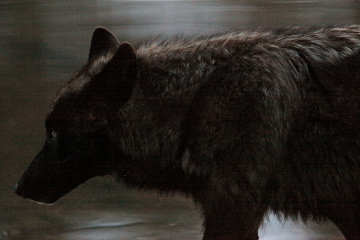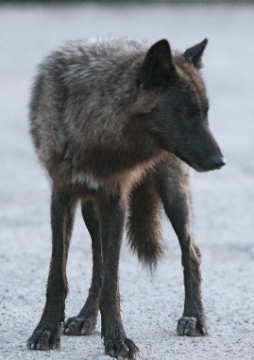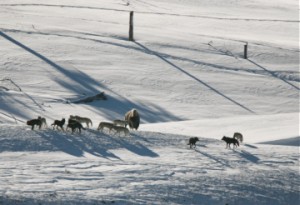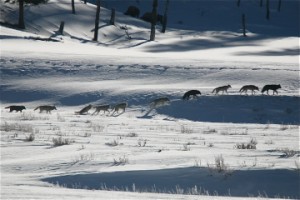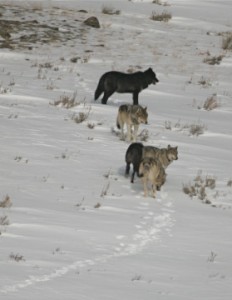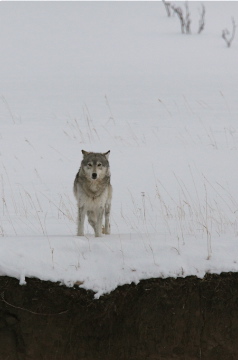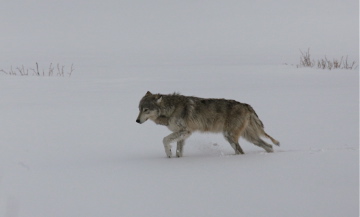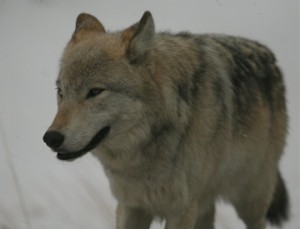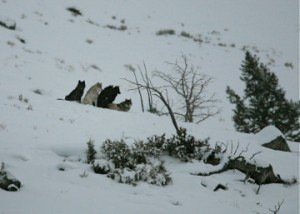Wolves
A successful reintroduction of wolves occurred in 1995 back into Yellowstone after an absence of almost 70 years. The several dozen wolves were brought in from Canada and released at first near the Tower Junction area. Packs have formed and been realigned over the years as some packs increase and others decrease or disappear altogether. A pack can range from 2 to 20 in most scenarios. There are many studies that are currently under way where wolves are collared and then monitored daily. Not a day goes by in the Park where a wolf is not observed.
Lamar Valley is one of the best places to view wolves where at least 3 packs overlap. The ranges have increased as packs are territorial of their boundaries pushing some wolves outside of the Park. Montana, Idaho and Wyoming now have small numbers in their forests. There is a controversial hunt going on right now that many biologist don’t agree with. But as always it is politics that wins. It seems that when it comes to wolves, people and the government agencies can’t get it right.
Wolves primarily hunt elk but also hunt moose, bison, deer, bighorn sheep, antelope and other animals. I have observed one chase after a snowshoe hare. But it is the elk that sustain them. Wolves keep the elk herds healthy by keeping the best DNA strains alive. They go after the weakest link unlike a lion that hunts and stalks the closest prey in proximity. Elk populations are at sustainable numbers in those states. All three states want to have the minimum numbers of wolves allowed which would create an unhealthy population, poor genetic diversity and inbreeding.
Wolves are one of the main reasons why people visit Yellowstone. They create an economy onto their own. To hear the wolf howl is truly the “call of the wild”. Gray wolf populations were extirpated from the western U.S. around 1930. Wolves from Alberta and British Columbia occasionally dispersed south into Montana and Idaho but failed to survive long enough to reproduce. They received legal protection with the passage of the Endangered Species Act in 1973. By 1995 when the gray wolf was reintroduced back into Yellowstone there were already 6 small packs living in NW Montana. There are three recovery areas of the gray wolf: NW Montana, greater Yellowstone area and central Idaho. There are small populations of wolves dispersed in NW Washington, NE Utah and possible erratics in Oregon. Northern Minnesota has also had a small sustainable populations. Mortality rates are high for wolves. Pups are killed by other wolves, inter-pack conflicts, disease such as mange, vehicle strikes, injuries sustained by encountering prey, general injuries, poaching and now legal hunting. The average age of a wolf’s lifespan is about 5 years in the Yellowstone ecosystem. And there they are protected. In order for the northern Rocky Mountains to function as a metapopulation for wolves and other carnivores (grizzly and black bears, mountain lions, lynx and wolverines) it will be necessary that dispersal corridors to the Yellowstone ecosystem be established and conserved.
